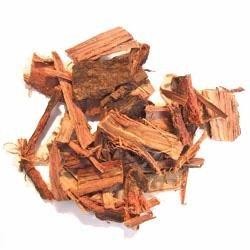Mimosa hostilis
| Mimosa tenuiflora | ||||||||||||||||
|---|---|---|---|---|---|---|---|---|---|---|---|---|---|---|---|---|
 Mimosa tenuiflora | ||||||||||||||||
| Plant Info | ||||||||||||||||
|
| ||||||||||||||||
| Scientific classification | ||||||||||||||||
| ||||||||||||||||
| Binomial name | ||||||||||||||||
| Mimosa tenuiflora (Willd.) Poir.[1] | ||||||||||||||||
|
| ||||||||||||||||
 Range of Mimosa tenuiflora | ||||||||||||||||
| Synonyms | ||||||||||||||||
| * Acacia hostilis Mart. |
Description
Mimosa tenuiflora is a perennial evergreen shrub native to the northeastern region of Brazil and found as far north as southern Mexico. It is one of scores of Mimosa species and cognates; as a medicinal plant this particular species has acquired a variety of colloquial names as well as several synonym Latin binomials- including M. hostilis in reference to the plant having significant spines.
The white, fragrant flowers occur in loosely cylindrical spikes. The fern-like branches have leaves that are finely pinnate, growing to 5 cm long. The brittle fruits average 3 cm long. The plant itself grows to 4 meters in height.
Uses
Entheogenic uses
The Mimosa hostilis tree is known locally as Jurema, Jurema Preta, Black Jurema, and Vinho de Jurema. The root-bark of the plant contains concentrations of phytoindole tryptamines including DMT; and is the part traditionally used in north-eastern Brazil in a psychoactive decoction also called Jurema- or Yurema. Analogously the traditional Western Amazonian sacrament Ayahuasca is brewed from indigenous ayahuasca vines. However- to date no β-carbolines such as harmala alkaloids have been detected in M. hostilis decoctions; yet the root bark is consistently used without added MAOI.
This presents challenges to the pharmacological understanding of how DMT from the plant is rendered orally active as an entheogen. It has even been reported in the literature that beverages using M. hostilis likely have no true psychoactive effects. In this view, if MAOI is neither present in the plant nor added to the mixture, the enzyme MAO will break apart DMT in the human gut, preventing the active molecule from entering blood and brain.
However the isolation of a new compound 'Yuremamine' from M. hostilis as reported in 2005 represents a new class of phyto-indoles[2]- which may explain an apparent oral activity of DMT in Jurema.
Medicinal uses
In Mexico, where the bark of the tree is used under the name tepezcohuite, this plant is an external remedy for healing skin with problems including burns.
It is now used in commercial hair and skin products promoted to rejuvenate skin.
Research supports the traditional uses. The bark is known to be rich in tannins, saponins, alkaloids, lipids, phytosterols, glucosides, xylose, rhamnose, arabinose, lupeol, methoxychalcones and kukulkanins. In vitro studies have shown three times more bacteriocidal activity on bacterial cultures than streptomycin, although in vivo studies have not been as positive.
Other uses
The wood of the tree is also used in fence construction and for other purposes, such as a source for the plant growth hormone, gibberellic acid (C19H22O6), which is known to cause exponential growth in plants and some flowering bodies of fungi.
References
- ↑ ILDIS LegumeWeb
- ↑ Vepsäläinen, J. J.; Auriola, S.; Tukiainen, M.; Ropponen, N. & Callaway, J. (2005). "Isolation and characterization of Yuremamine, a new phytoindole". Planta Medica 71(11): 1049-1053.
